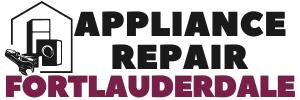The kitchen landscape has been forever altered by the inclusion of Microwaves, offering a fast and convenient solution for meal preparation. Nevertheless, just like any other appliance, Microwaves can experience problems as they age. Don’t rush to replace your malfunctioning Microwave; often, you can diagnose and resolve the issue yourself or with the assistance of a qualified technician. This comprehensive guide takes an in-depth look at common Microwave problems and their potential solutions, enabling you to economize on both time and finances.
The Top Priority: Section 1
Before you start repairing a microwave, make safety your foremost concern. Microwaves function with high voltage and can present electrical hazards. Be sure to observe these safety recommendations:
Unplug the Microwave: The microwave must always be unplugged from the power source before doing any repairs.
Avoid Water: Always steer clear of spraying water or utilizing wet items in the microwave, as it can potentially lead to electrical shock.
Wear Safety Gear: When handling electrical components, it’s essential to use the appropriate safety gear, including gloves and safety goggles.
Microwave Predicaments: Section 2
Failure of a Microwave to start
Resolution: Investigate the power source and the circuit breaker’s status. If they check out, it might be a blown fuse or a malfunctioning door switch causing the problem. Consider replacing these components as a potential solution.
Microwave Operates, Yet No Heating Occurs:
Recommended course of action: A problematic magnetron, capacitor, or diode could be causing the problem. It is advisable to have these components changed by a professional technician.
Dealing with Sparks Inside Your Microwave:
Recommended course of action: Inspect the inside for metal items or a worn waveguide cover. Eliminate any foreign objects and replace the cover if it’s impaired.
Odd Noises When Using the Microwave:
Recommended course of action: Inspect your microwave for noise, as it may be caused by damaged turntable motors or malfunctioning cooling fans. Replacing these components should fix the problem.
Microwave Door Won’t Close Properly: What to Do?
Recommended course of action: It’s essential to check the door seal for debris or food particles and clean it thoroughly. If the issue lingers, consider replacing the door latch or hinges.
When Microwave Buttons Don’t Respond:
Recommended course of action: It’s crucial to clean the keypad and check for moisture or debris causing a malfunction. If the problem persists, consider replacing the control panel or membrane switch.
Addressing Microwave Overheating Problems:
Recommended course of action: Address overheating concerns by ensuring proper ventilation—clear obstructions around the microwave. If overheating continues, consider replacing a faulty thermostat or sensor.
Section 3: Indications for Professional Assistance
Although you can attempt DIY troubleshooting for minor microwave issues, certain problems should only be handled by a qualified technician:
High-Energy Components: Repairing high-voltage elements like the magnetron, capacitor, and diode necessitates specific knowledge and toolsets.
Sophisticated Wiring Concerns: It’s wise to entrust the management of electrical wiring to professionals if you’re not at ease handling it.
Safety Issues: If you’re uncertain about your safety or the microwave’s soundness after troubleshooting, it’s essential to reach out to a technician promptly.
Microwaves can be economically repaired to enhance their operational lifespan. By observing safety guidelines and troubleshooting common problems, you can frequently address minor issues yourself. Should you encounter more intricate problems or have doubts about the repair procedure, consider enlisting the assistance of a qualified technician. Armed with the right expertise and safety steps, you can guarantee that your microwave functions efficiently for an extended period.

